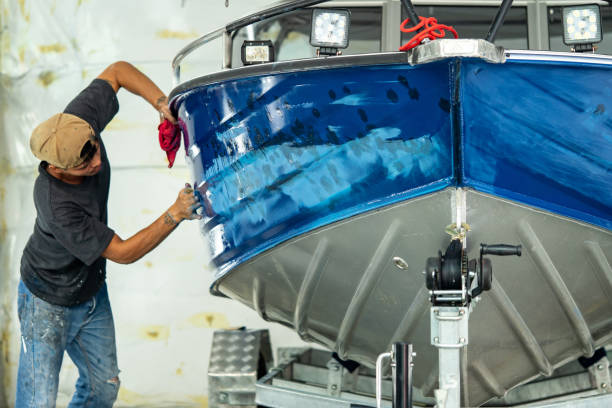Essential Boat Maintenance Tips for a Smooth-Sailing Experience
Contents
Table of Contents
- Routine Inspections
- Hull and Bottom Care
- Engine Maintenance
- Electrical System Checks
- Safety Equipment Upkeep
- Seasonal Preparations
- Cleaning and Detailing
- Long-term Storage Tips
Routine Inspections
Maintaining your boat is essential to increasing its lifespan and functionality. Regular check-ups ensure that minor issues don’t escalate into costly repairs. By allowing a periodic overview of vital components, you can keep safety and reliability at their best. Whether examining the vessel’s mechanical services or conducting thorough safety equipment inspections, staying proactive is advantageous. Fortunately, routine maintenance doesn’t have to be a chore. Getting acquainted with your boat’s needs lets you confidently streamline maintenance processes.
Conduct monthly inspections to identify potential problems early. The boat’s structure, such as the hull and deck, should be visually checked for damage. Include a technological audit to update essential software or navigational tools. Careful attention to these elements ensures they uphold your boat’s integrity. These measures prevent breakdowns and create a safer environment for passengers. Documenting findings and dates helps track recurring issues, making it easier to address them effectively.
Hull and Bottom Care
The hull plays a vital role in your boat’s stability and performance, and neglecting its upkeep can reduce speed and fuel efficiency. Exposure to water, debris, and marine life can cause gradual deterioration. Regular cleaning and applying antifouling paint help counteract these effects. For instance, an annual scrub keeps the surface smooth, minimizing drag and saving energy. Whether maintaining your vessel or exploring the waters with jet ski rentals, proper hull care ensures optimal performance season after season.
Engine Maintenance
Consider your boat’s engine as its beating heart. Regular attention ensures it performs reliably and efficiently. Routine service includes oil changes and periodic inspections of belts and hoses. Consistently changing oil is vital for removing build-up and keeping parts lubricated. Examine connections to ensure they’re secure; loose parts can cause vibrations and subsequent failures. Scheduling inspections after 100 operational hours or once a year, whichever comes first, is the best practice. An engine reflecting a well-maintained status delivers consistent power, contributing to worry-free adventures on the water.
Electrical System Checks
Your vessel’s electrical system powers a range of critical mechanisms, from navigation to lighting. Begin by checking the battery’s health — any signs of corrosion or a loose connection could signal upcoming trouble. Regularly inspect the wiring for wear, as marine environments can be harsh. Correctly functioning circuits ensure the dependability of essential systems and your safety while on water. For a deeper understanding of electrical upkeep, refer to this guide on electrical maintenance tips for boat enthusiasts. Consistent care plays a fundamental role in preventing unexpected electrical failures.
Safety Equipment Upkeep
While maximizing enjoyment is important, safety should always take precedence on your boat. Consistent upkeep of safety gear is essential for risk management. Regularly evaluate life jackets for damage that compromises buoyancy. Check expiration dates of flares and replace fire extinguishers that lack appropriate charge levels. Your first aid kit should be complete and up-to-date, ready to handle any medical emergency aboard. By ensuring each equipment piece is functional, your preparation pays off when it matters most.
Seasonal Preparations
Adapting to seasonal changes keeps your boat in prime condition throughout the year. Winterizing involves draining fluids, adding antifreeze, and safeguarding interiors from wintry chills. In contrast, summer preparation encompasses coolant inspections and ensuring ventilation systems operate optimally. Regular seasonal adjustments protect against the elements and streamline maintenance costs. Conducting these preparations in early seasons prevents rush and allows ample time to address concerns as they arise.
Cleaning and Detailing
A clean boat maintains its beauty and functionality over time. Begin with washing the exterior using mild, biodegradable soaps that protect wax layers and finishes. Clean several times during the season to avoid accumulating dirt and grime. Interior cleanliness is also key; keep upholstery spotless and polish any chrome trims. Dedicated maintenance ensures that the entirety of your vessel remains pristine, contributing to pride in ownership and preserving salability when it’s time for an upgrade. Perform a deep clean twice annually to maintain a stunning, fresh appearance.
Long-term Storage Tips
Proper off-season storage helps protect your investment from the ravages of time and weather. Utilize snug-fitting boat covers to prevent sun and dust damage. Choose climate-controlled storage to maintain dry, stable conditions if possible, preserving the boat’s structural integrity. It’s also wise to stabilize fuel, remove batteries, and employ lifting systems to avoid pressure points on the hull. These actions ward off deterioration and ensure your vessel is ready to embrace the open waters at every call.

